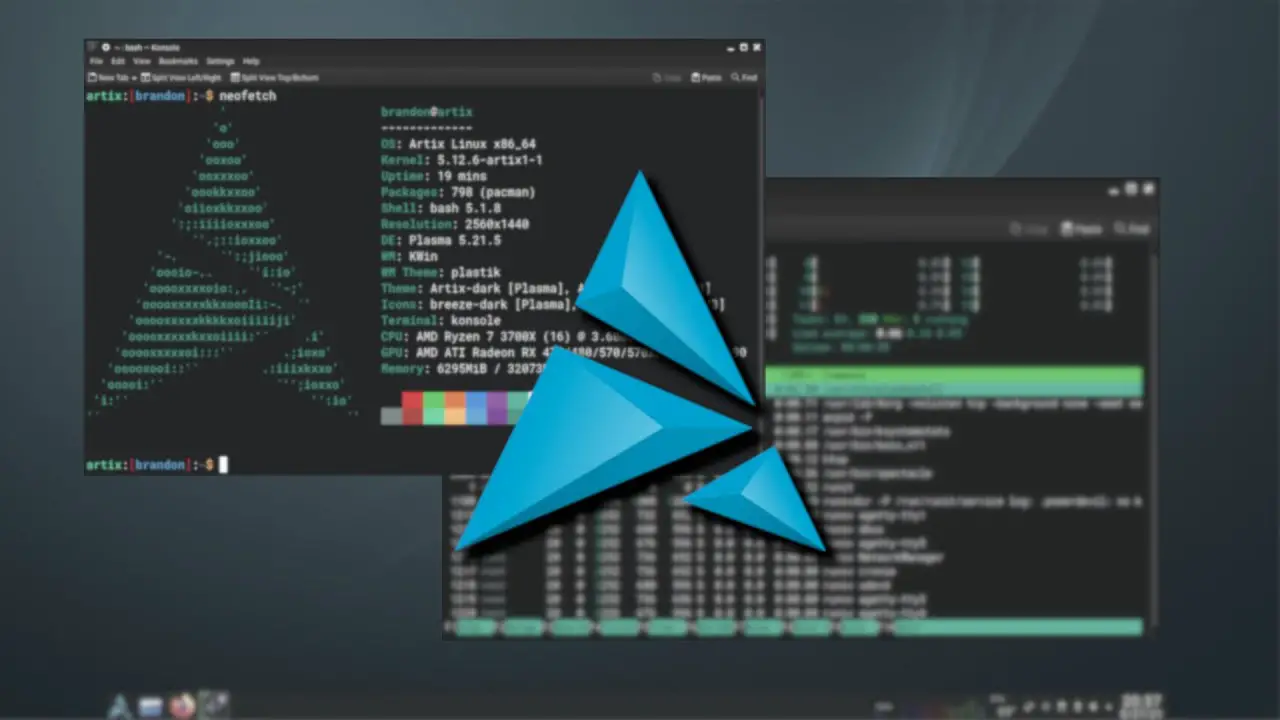Artix and Void Linux are independent Linux distributions that offer a unique operating experience emphasizing user freedom, privacy, and customizability. Both distributions stand out by being systemd-free, meaning they employ alternative init systems, presenting distinct characteristics and advantages.

Artix Linux follows the Arch Linux philosophy, striving to provide a lightweight, rolling-release distribution with a focus on simplicity and flexibility. Artix offers OpenRC as its default init system, which lends itself to a robust and versatile approach to service management. OpenRC provides a straightforward configuration syntax, allowing users to tailor the boot process and service dependencies with ease.

On the other hand, Void Linux takes a different path, emphasizing a minimalist design philosophy. Void eschews systemd altogether, opting for its own in-house init system called runit, characterized by its simplicity and resource efficiency. Runit operates on a per-service basis, providing a highly granular level of control over service startup and dependencies.

Both Artix and Void place a strong emphasis on user choice and customizability. They empower users with the freedom to select and configure software components to suit their specific needs and preferences. This user-centric approach resonates with those who value autonomy and flexibility in their computing experience.
In terms of software availability, Artix Linux grants users access to the vast AUR (Arch User Repository), boasting a plethora of packages and applications that cater to diverse user requirements. Void Linux, while having a smaller package repository compared to Artix, focuses on maintaining a curated collection of high-quality software.
When considering hardware compatibility, Artix and Void Linux generally offer excellent support for a wide range of devices. Both distributions actively maintain their kernels and drivers, ensuring compatibility with various hardware configurations.
Ultimately, the choice between Artix Linux and Void Linux boils down to personal preferences and specific usage scenarios. Those seeking a flexible and customizable distribution with access to a vast software repository might find Artix Linux more suitable. Conversely, users prioritizing minimalism, efficiency, and a tightly integrated user experience may gravitate towards Void Linux.


I won’t ever compreend if I should to try Void or Artix. Void sounds more like an experienced Distro which is great in some ways. But it’s almost exactly like using Gentoo, and I don’t know why I would use Void Linux when I could just use Gentoo Linux. Artix on the other hand seems more like a beginner distro that is easy to use and understand. But it also seems like it’s not as powerful as Void Linux. I’m not sure which one to choose.
Void Linux is a rolling release distribution that uses the musl libc instead of the glibc. This makes it much smaller and faster than most other distros, and it also means that it’s more secure. Artix Linux is a fork of Arch Linux that is designed to be systemd-free. This means that it’s more lightweight and efficient than Arch Linux, and it’s also more secure. Both Void Linux and Artix Linux are great choices for users who want a fast, lightweight, and secure distro.
Void Linux is a great choice for users who want a minimal and lightweight distro. It’s very fast and efficient, and it’s also very secure. However, it’s not as user-friendly as some other distros, and it can be difficult to find software for it. Artix Linux is a good choice for users who want a more user-friendly distro that’s still systemd-free. It’s not as fast or efficient as Void Linux, but it’s still very lightweight and secure. It’s also easier to find software for Artix Linux than it is for Void Linux.
Void Linux is for chads, Artix Linux is for virgins.
Void Linux is the best distro because it’s the most difficult to use.
Artix Linux is the best distro because it’s the most user-friendly.
Void Linux is better than Artix Linux because it’s more secure.
Artix Linux is better than Void Linux because it’s more user-friendly. !!!!
Void Linux is terrible. It’s too difficult to use and there’s no software for it.
Void Linux is a rolling release distribution that uses the musl libc instead of the glibc. This makes it much smaller and faster than most other distros, and it also means that it’s more secure. Artix Linux is a fork of Arch Linux that is designed to be systemd-free. This means that it’s more lightweight and efficient than Arch Linux, and it’s also more secure. Both Void Linux and Artix Linux are great choices for users who want a fast, lightweight, and secure distro.